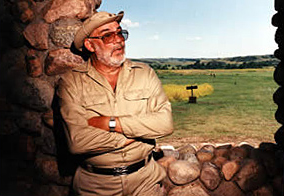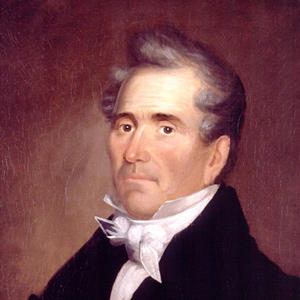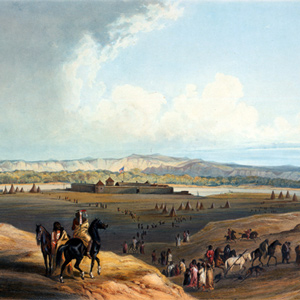Raymond Wood at the Fort Clark Historic Site
North Dakota, 2001

© Tom Stromme, Bismarck Tribune
Professor Emeritus, North American Archaeology, University of Missouri, Columbia
Dr. Raymond Wood’s long list of publications shows the scope and depth of his work as a scholar and teacher. Among his best-known books are Early Fur Trade on the Northern Plains: Canadian Traders among the Mandan and Hidatsa Indians, 1738-1818 (with Thomas D. Thiessen. University of Oklahoma Press, 1985); A book-length study, Karl Bodmer’s Studio Art: The Newberry Library Bodmer Collection (University of Illinois Press, 2002); and, most recently, Prologue to Lewis and Clark: The Mackay-Evans Expedition (University of Oklahoma Press, 2003), which focuses on historical events and Native Americans on the Upper Missouri River during the 1790s.
His research interests center on the Ozark Highlands of the midcontinent, and on the Great Plains of North America, and include both prehistoric studies and ethnohistory—especially of the Plains village peoples. He is interested primarily in the archaeology, ethnohistory, and Quaternary paleoecology of the North American Great Plains and Midwest states of North America, particularly the environmental and processual bases for the culture histories of these areas. The archaeology of World War II and the historical cartography of the Missouri River are major auxiliary interests.
Dr. Wood’s current ethnohistorical work concerns the history and archaeology of the agricultural, village-dwelling Sioux Indians, the Yanktonais, as well as a book in progress, Twilight of the Fur Trade. He also is editor of The Missouri Archaeologist, the journal of the Missouri Archaeological Society.
Contributions


The Corps of Discovery had been, as James Ronda phrased it, “only the latest in a long series of traders and travelers” to visit the tribes living along the Missouri. The Mandans had been visited in 1738 by la Vérendrye from his base on the Assiniboine River.
Manuel Lisa
by W. Raymond Wood

After founding the Missouri Fur Company (1807-1814) Lisa made four trips up the Missouri and Yellowstone rivers to exploit the richness of the northern Rockies, and he dominated the upriver trade until 1820, two years before his death.


Manuel Lisa’s men at Fort Raymond not only encouraged the Crows to come trade with them, but they set out parties to trap beaver on their own. It was the latter effort that led to hostilities with the Blackfeet that affected Potts, Drouillard, and Colter.
Fur Trade after the Expedition
by W. Raymond Wood

The Louisiana Purchase and the lure of its beaver population led to a veritable flood of traders and trappers moving toward the Upper Missouri and the Northern Rocky Mountains and the slow abandonment of the overland trade in the United States by Canadian and British interests.
Experience the Lewis and Clark Trail
The Lewis and Clark Trail Experience—our sister site at lewisandclark.travel—connects the world to people and places on the Lewis and Clark Trail.
Discover More
- The Lewis and Clark Expedition: Day by Day by Gary E. Moulton (University of Nebraska Press, 2018). The story in prose, 14 May 1804–23 September 1806.
- The Lewis and Clark Journals: An American Epic of Discovery (abridged) by Gary E. Moulton (University of Nebraska Press, 2003). Selected journal excerpts, 14 May 1804–23 September 1806.
- The Lewis and Clark Journals. by Gary E. Moulton (University of Nebraska Press, 1983–2001). The complete story in 13 volumes.

